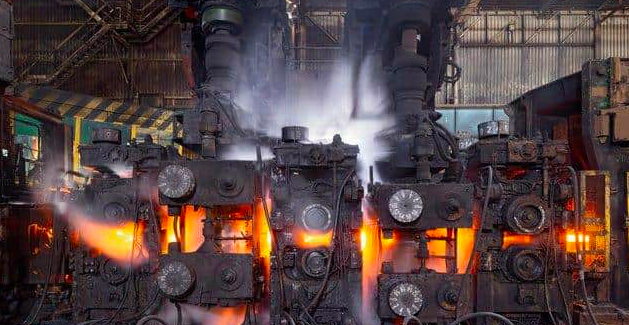Ukraine was a steel powerhouse but since the Russian invasion at the beginning of last year the sector has suffered ahuge blow and there is little prospect of recovery until Putin’s forces are driven out
Zaporizhstal, a Soviet-era steel plant in the southern Ukrainian city of Zaporizhzhia, has managed so far to keep running in defiance of staff shortages, blocked exports, power blackouts and the threat of Russian missile attacks.
Ukraine was ranked 25th among steel producing countries in 2022, when Russia’s invasion dragged its output down by 71% to 6.3 million tons from 21.4 million tons, according to the World Steel Association.
It shut down temporarily last year for the first time since World War Two, and director Roman Slobodianiuk knows its future, and that of Ukraine’s once-mighty steel industry more broadly, is in doubt.
Until producers can get steel to markets via the Black Sea, where Russia continues to pose a threat to shipping, there is little prospect of recovery for a sector second only to agriculture in its importance to Ukraine’s economy.
“If we do not have open sea ports, our industry will not survive, and all other (industries) will follow us,” Oleksandr Kalenkov, head of Ukraine’s steelmakers’ union, told Reuters.
The union’s statistics explain the assessment. In Soviet times, Ukraine produced more than 50 million tonnes annually. That fell to 21-22 million tonnes by 2021, and after Russia invaded last year, output hit 6.3 million in 2022.
The slump is explained in part by Russia’s territorial gains that have led to the loss of control over, or destruction of giant plants, notably in Mariupol where the Azovstal steelworks was the scene of some of the fiercest fighting of the conflict.
In the first nine months of 2023, production was down a further 17% year-on-year at 3.9 million tonnes, the latest data shows, although the full-year figure could show a modest rise.
Another small bright spot is domestic demand, which is rising as Ukraine churns out more weapons, builds bomb shelters and begins to rebuild towns and cities damaged during the war.
But even with consumption nearly doubling to 2.6 million tonnes between January and September, that is not enough to sustain a sector that used to export four fifths of its output.
Before the full-scale invasion, the metallurgical sector as a whole accounted for 10% of Ukraine’s GDP and 30% of exports.
With Black Sea shipments virtually non-existent, steelmakers are sending as much produce via rail to Europe as they can.
Of the 1,800 cargo cars that move from Ukraine to Europe each day, the steel industry accounts for about half, and the limit for rail exports is around 3 million tonnes a year.
“If you compare it to seaborne transport, it costs four times more,” Slobodianiuk told Reuters during a visit to his plant earlier this month, adding that this year cargo rail tariffs would increase, pushing up cost by another 20-30%.
Meanwhile, less than 100,000 tonnes of steel have moved through southern ports around Odesa so far in 2023, said Stanislav Zinchenko, head of Ukrainian commodities think-tank GMK Center, a tiny percentage of what is needed.





